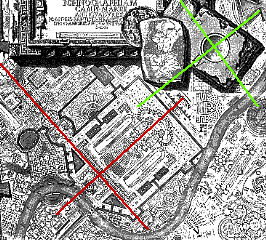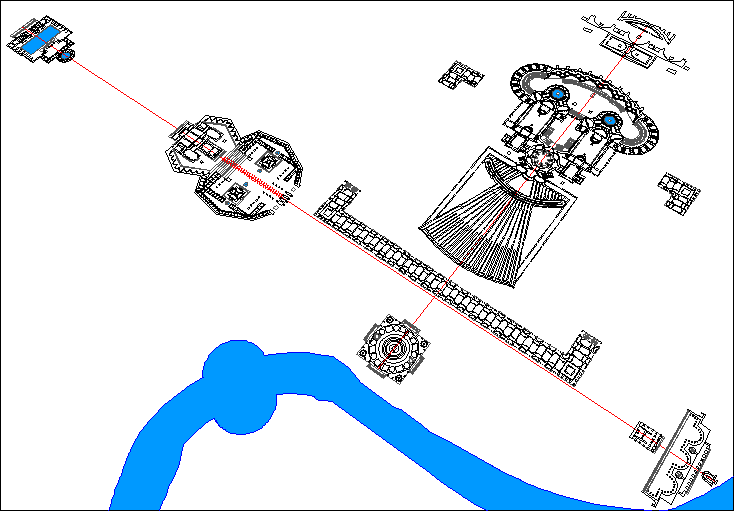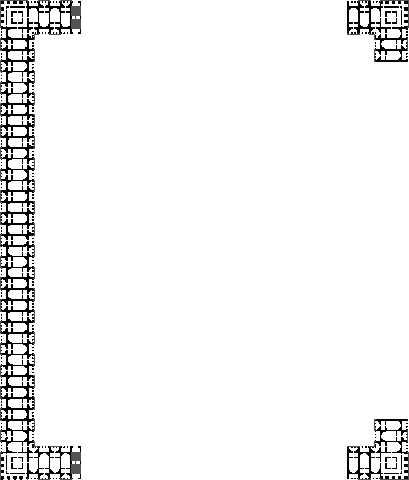The Roman castra and city--and Rome itself--are based on the same model: The square or rectangular area is divided into four parts by two main streets intersecting at right angles; the primary cardo and the secondary decumanus. The cardo, running from north to south, represents the axis of the world, and the decumanus the course of the sun from east to west.
Christian Norberg-Schulz, Meaning in Western Architecture (New York: Praeger, 1975), p. 84.
Piranesi, in his Ichnographia Campus Martius, establishes new axes for ancient Rome: the cardo, the axis of the world, becomes the axis of death, and the decumanus, the path of the sun, becomes the axis of life.
| |

The axes of life and death correspond almost exactly to the four compass points.
|


